By Jessica Cockroft
What is backpacking? How do you get started? What do you need to have on your gear list?
This article will answer all those questions and more. We’ll look at essential safety considerations and figure out how to plan a trip. Plus, you’ll learn how to personalize your set-up because no two people will backpack the same way.
Let’s demystify backpacking together!
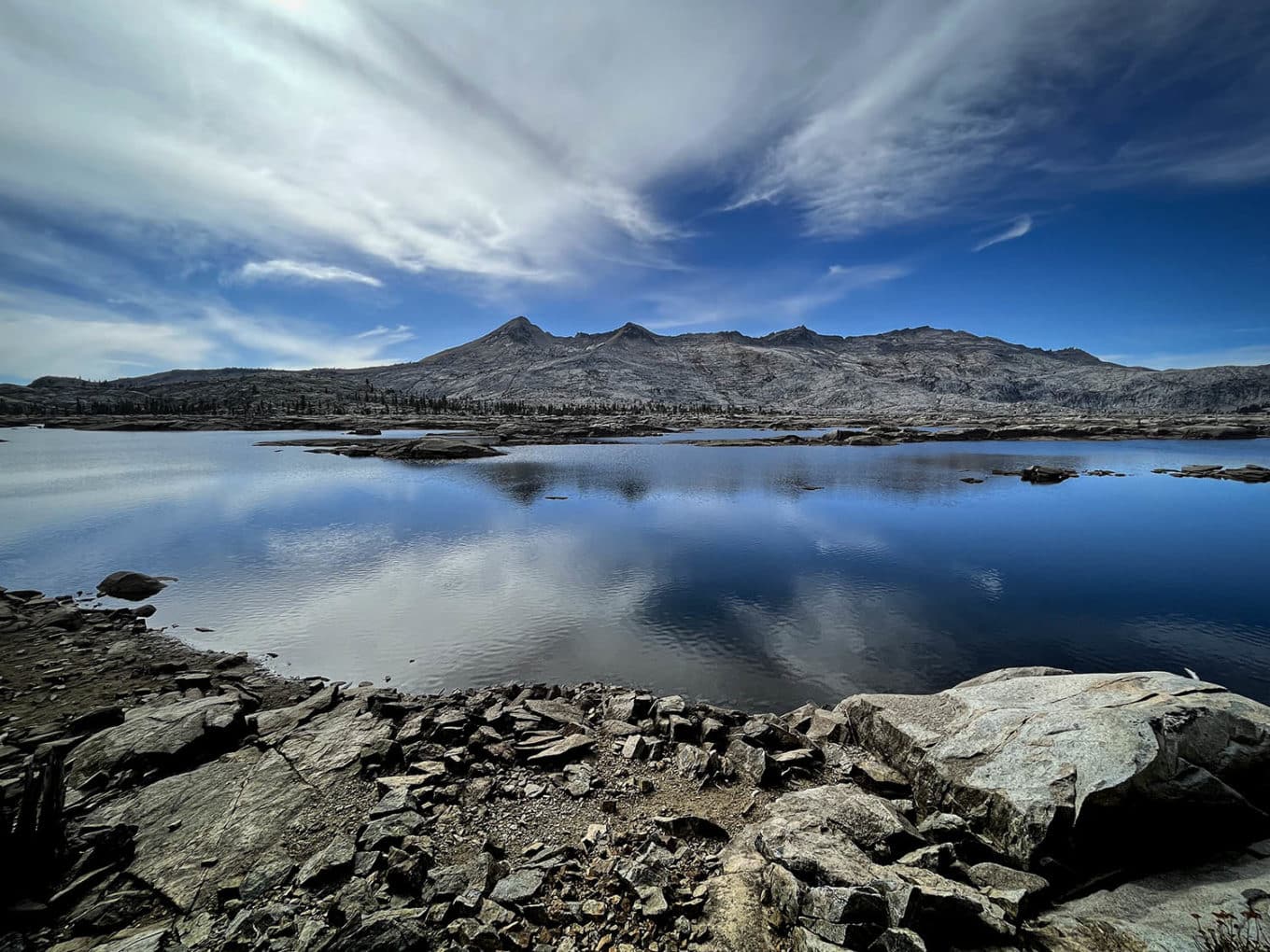
Backpacking is all about experiencing beautiful, hard-to-reach places. Packing everything you need in a backpack and walking to your destination means leaving behind modern transportation and hoofing it. It’s letting sweat, determination, and grit determine how far you go.
It’s not about the distance, but rather the means of transportation. If you get your camping set-up from point A to Point B on your back, you’ve gone backpacking.
It depends! Some people love snowshoeing through a winter wonderland to reach camp. For others, that sounds miserable. It’s just important to recognize that each season has its challenges.
Get specific about what you want your experience to look like. Do you want to sleep in colder temperatures? Do you like hiking in shorts and finding good swimming holes? Would you rather deal with bugs or frost?
You get to choose what the best time is.
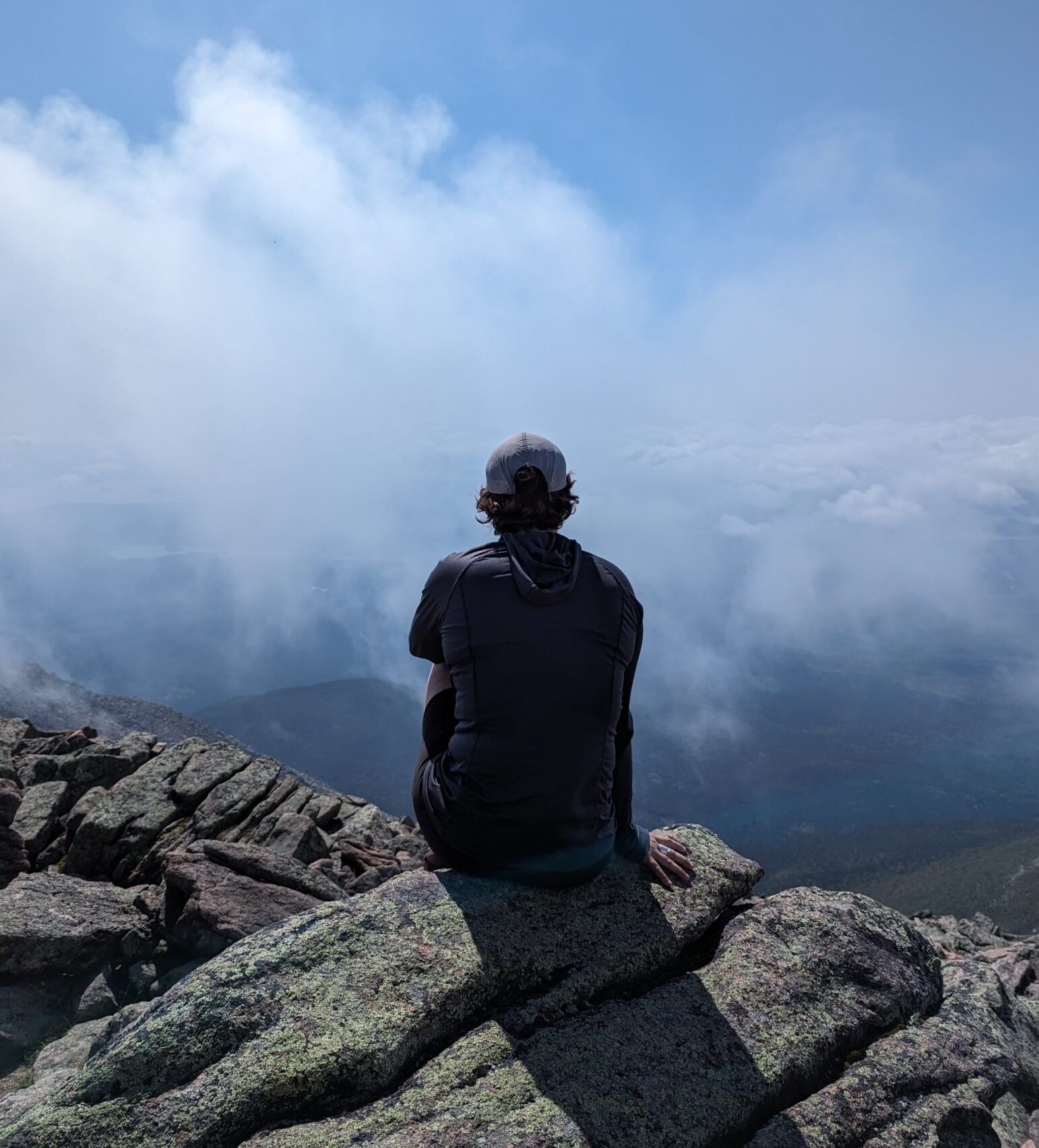
Backpacking is a multi-million dollar industry that big-name companies make serious bank on. Looking at lists of gear recommendations can be daunting, but don’t let that discourage you from an amazing new adventure. Let’s look at what could help you enjoy the trip.
What one backpacker considers essential may be entirely negotiable for another. Personalizing your gear list will ensure you enjoy your time in the backwoods! Because of that, we opted to offer an extensive list of what you CAN include in your pack if you want to.
As you build your gear library, keeping safety and comfort in mind will help you make purchasing decisions.
Shelter – Tents made specifically for backpacking are lightweight and pack down small. If you like using trekking poles (see below), you can even get tents that utilize them, cutting down on weight even more.
You could also forego a tent and sleep in a hammock if your destination has plenty of trees. Bring a bug net to save yourself from mosquitos and a tarp and line to protect against the elements. Of course, you can also go full cowboy and just sleep in the dirt if that’s your thing. Just make sure you know what the weather has planned before choosing this option!
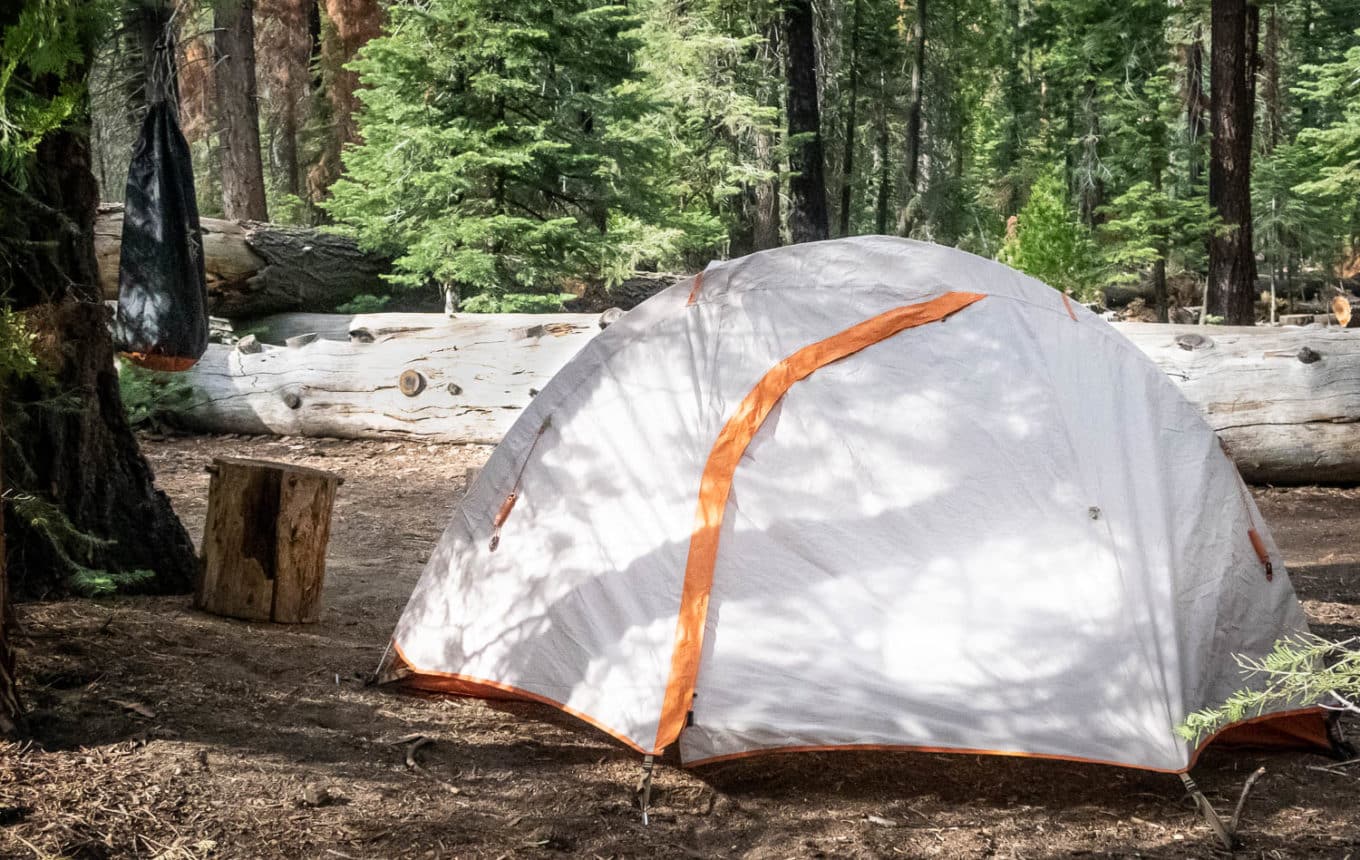
Sleeping Bag – The most important thing about sleeping bags isn’t cushion. It’s temperature control. Choosing the right bag for you requires knowledge of both the expected air temperature during your trip and your own unique experience in sleeping temperature regulation. Do you get hot when you sleep a lot? Or are you like me, constantly chilly no matter how low that bag is rated?
Sleeping bags are tested in a lab to maintain consistency across brands. Dummies wear base layers and use a sleeping pad under the bag. Keep that in mind and adjust as necessary if you are forgoing either of those items! Testing yields two ratings: the “Comfort” and the “Lower Limit” ratings. The first is for colder sleepers, the second for warmer ones. Choose accordingly!
Sleeping Pad – Sleeping pads offer both padding from hard ground and insulation from cold ground. They come in various materials ranging from blow-up plastic (super lightweight and compactable) to inflating memory foam (super comfy and insulating).
Where bags have temperature ratings, pads have what’s called an R-rating. The numbers, ranging from low single digits to low double digits, don’t equate to temperatures. The R stands for “resistance,” referencing how effectively it resists heat transfer from your body to the cold ground beneath you. The higher the number, the greater the insulation. Testing became standardized in 2020, so comparing across brands is simple.
Cook Stove – When fire isn’t an option (or iffy, at best), having another for preparing a warm meal can be worth the extra weight. Tiny, folding contraptions requiring fuel canisters can heat water for dehydrated meals, make coffee, or even roast a marshmallow. Of course, you can do without a hot meal on the trail altogether. But many backpackers find that the trade-off of lighter food (dehydrated food weighs less than protein bars, for instance) makes packing a stove worth it for the added enjoyment of ending their day with a full meal.

Food Storage – No matter what kind of food you pack, you’ll need to protect it from wildlife while sleeping. Stashing it all in a bear-proof canister will keep it safe and ensure bears don’t develop a bad habit of raiding camps for easy meals. Always put it at least 70 big steps away from where you’re sleeping so any smells don’t draw bears to YOU.
We’ll talk more about this aspect in a bit.
Clothing – Wearing layers when backpacking is a good practice. You’ll want to prioritize moisture-wicking properties, making cotton a no-go. Invest in high-quality apparel that dries quickly, breathes well, and gives you freedom of movement. If you’re a pocket-lover, you can find brands that offer plenty to keep things within reach. Some companies even have unique features like full-range zippers to make backcountry bathroom breaks a breeze.
The important thing is to make sure you account for weather changes and have options.
Footwear – What you want on your feet will depend mainly on the terrain you’re tackling. Tread depth, ankle support, water resistance, etc., should be weighed against your specific situation. Ultimately, you want your feet to be dry and comfortable at the end of a day filled with switchbacks and stacking up miles.
Whether you choose a sturdy boot or a straight-up sandal, you need to take the time to let them earn your trust. Don’t head out for a week on the trail with new shoes. Put them on some short test runs first.
Trekking Poles – A good walking stick never goes out of style. These days, you can get carbon fiber or aluminum ones complete with springs, padded grips, and wrist straps. The lightest ones will only set you back 9 oz, and many hikers say they’re worth every bit.
Using trekking poles gets hikers into a rhythm and helps spread the load. They can be handy in tricky terrain and river crossings. A heavy pack makes a big difference in the center of gravity, so additional support points can help.
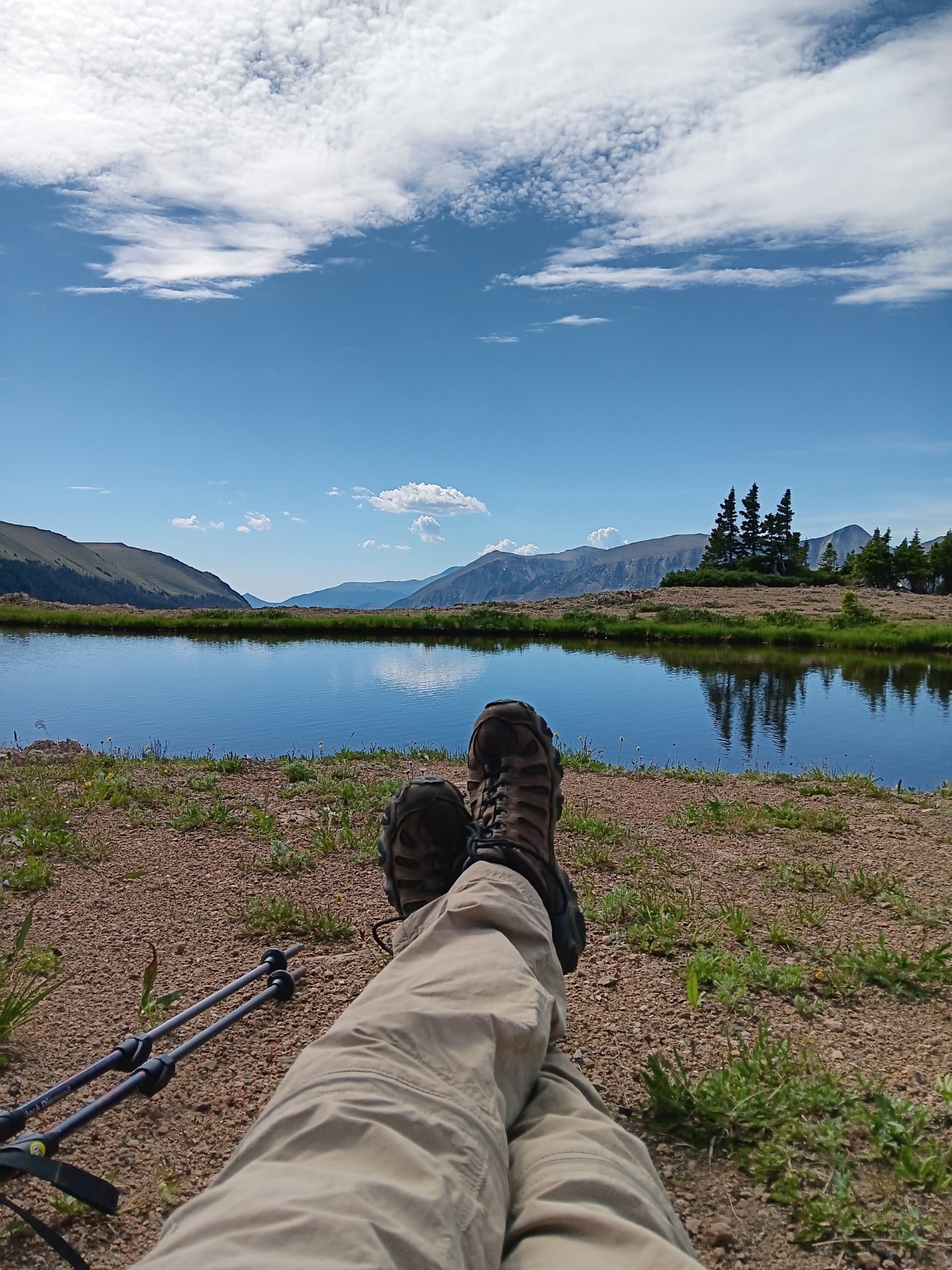
Navigation & Communication – Knowing where you are and where you’re going is essential to backpacking. Paper maps, a reliable compass, and GPS devices will keep you on track. Sticking with a map and compass takes away the reliance on electricity but requires a certain skill level that would be dangerous to try hacking. Utilizing devices, whether an app on your smartphone, a watch, or a hand-held GPS tracker, means you must stay on top of battery usage and potentially pack a backup.
The critical part of this gear choice is knowledge. Whatever method you choose to use, make sure you know how to use it.
First Aid – Another essential knowledge for backpackers is first aid. A sprained ankle is annoying while working your desk job. It’s entirely different when you’re 30 miles from the nearest trailhead. Basics like disinfectant, bleed-stop powder, blister cream, bug spray, etc., can add weight but be worth it in the long run.
Lighting – Never, ever hit the trail without some way of seeing in the dark. Even day hikers should bring a flashlight in case they get delayed. Headlamps are popular since they light the way without needing to be held. But the most powerful lights are handheld, with some flashlights boasting 120,000 lumens. Of course, you’ll pay a pretty penny for that kind of seeing distance! Most common flashlights used for camping are in the triple-digit range and are just used to see around your tent.
Firestarter – Even if you’re not planning on needing a fire, having a way to start one could end up saving your life. Temperatures can be unpredictable, and warmth is survival in the backcountry. Keep a flint and steel (and know how to use it!), or bring some waterproof matches or lighter, just in case.
Tools – Weighing convenience against weight is an endless game for backpackers. Things like foldable shovels, pocket saws, and camp kitchen gadgets can add up. Think about how much you’ll use it and see if there’s a way to go without it.
Of course, we haven’t mentioned one of your most significant purchasing decisions yet. Let’s look at packs next!

The best hiking backpacks offer comfortable load distribution, adequate capacity, and easy access to various compartments.
That being said, when you choose YOUR hiking pack, there’s a lot to weigh in the equation.
Frame Options – Most modern hiking backpacks feature an internal frame. Over time, these have displaced the old favorite of external frame packs. There are still a couple of manufacturers with designs comparable in weight, though, your preference is exterior. Of course, you can also go frameless, which is how many ultralight packers manage to log 30+ mile days over and over.
So which is better? Well, they each have their pros and cons. Exterior frames offer fantastic ventilation since they sit away from the body. But that space also makes them less ideal for traversing technical terrain. Interior frames fit snugly and provide comfortable weight distribution. But that fit also means you’ll end up sweaty back there. Frameless packs are super light, but you also lose support for your load.
If it’s not apparent yet, your personal comfort requirements will determine the kind of frame you choose.
Compartment Configuration – Most models on the market offer many compartments and even exterior straps to make tying extra gear on the outside feasible.
Where you like your pockets and how you use them may differ from where I like them and how I use them. Those small pockets on the hip belt? That’s where my snackie-snacks go. But I guess it also makes sense if you want to keep your chapstick and first-aid handy there.
Getting to know what you like will take a little time, but think through what you want to prioritize before choosing a bag for your first trip.
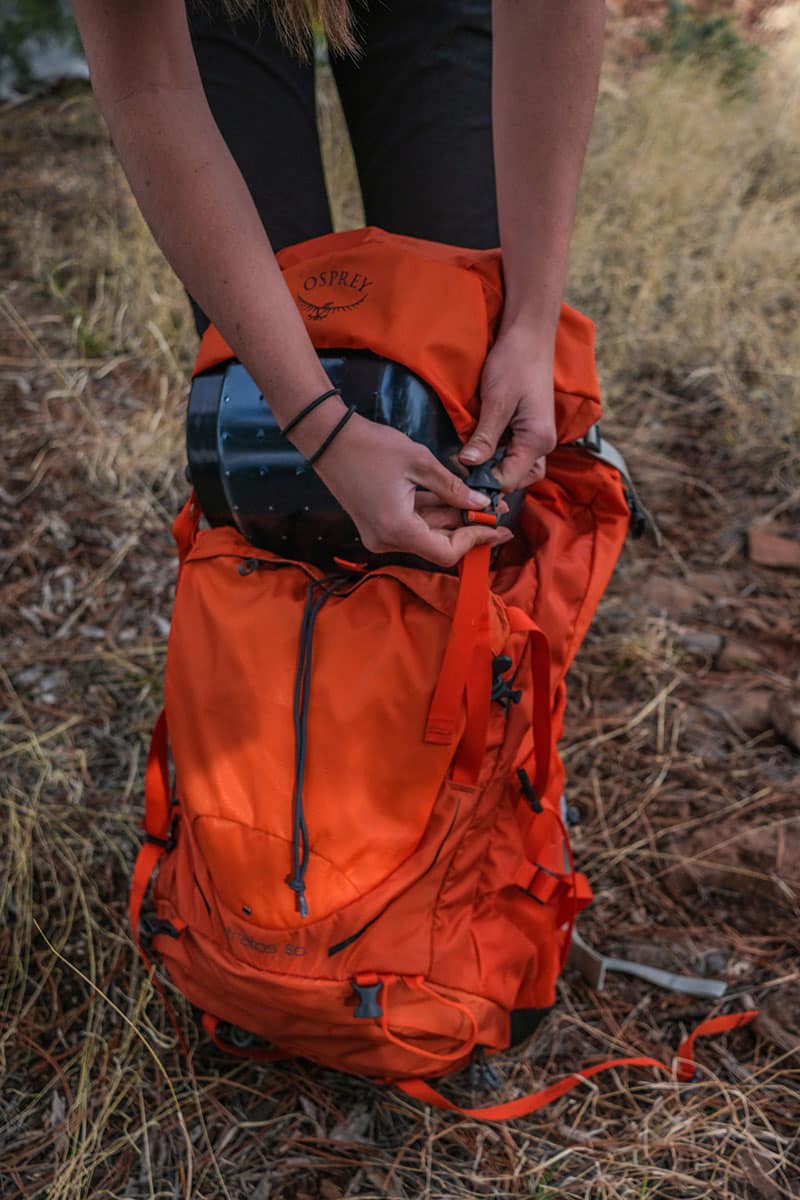
Weight – The difference between what empty packs weigh feels more significant than it looks. The lightest pack on Outdoor Gear Lab’s 2023 Ultralight Packs list weighs 12.5 oz. The heaviest on the non-ultralight list weighs 5.2 lbs. Picking up an extra 3.5 pounds doesn’t seem like a big deal. BUT… adding 3.5 pounds to an overall weight of 30+ pounds on a weeklong trek over mountain passes may feel different.
Most people wind up somewhere in the middle. The durability, structure, and comfort of packs that aren’t considered ultra-light may be worth the extra weight. The choice is up to you.
Warranties – Most companies offer protection against gear failure due to faulty construction material flaws. Some go above and beyond and ask no questions about their gear’s age or your usage habits. Do yourself a favor and take an extra minute or two to get familiar with a brand’s guarantee before clicking “Purchase.”
No matter where you go, backpacking will put you in close contact with wildlife. Rabbits will scurry across your path, squirrels will scold you from treetops, and random herds of mountain goats will take over your mountain trail.
The vast majority of such encounters will be either completely innocuous or pure magic, depending on your outlook. But it’s worth thinking through what you should do in case of an encounter that’s a little more intimidating.

Most of North America is home to large predators of some type. From the far north, where grizzlies and wolves roam, to the southern plains that feature bobcats and coyotes, you must consider these animals as you plan your backpacking adventure.
The two most important things you need to think about are PREVENTION and PREPARATION.
How do you PREVENT an encounter with a dangerous predator?
How do you PREPARE for an encounter with a dangerous predator?
Stay present and aware of your surroundings.
Make noise as you hike and camp.
Eliminate the possibility of accessing attractants.
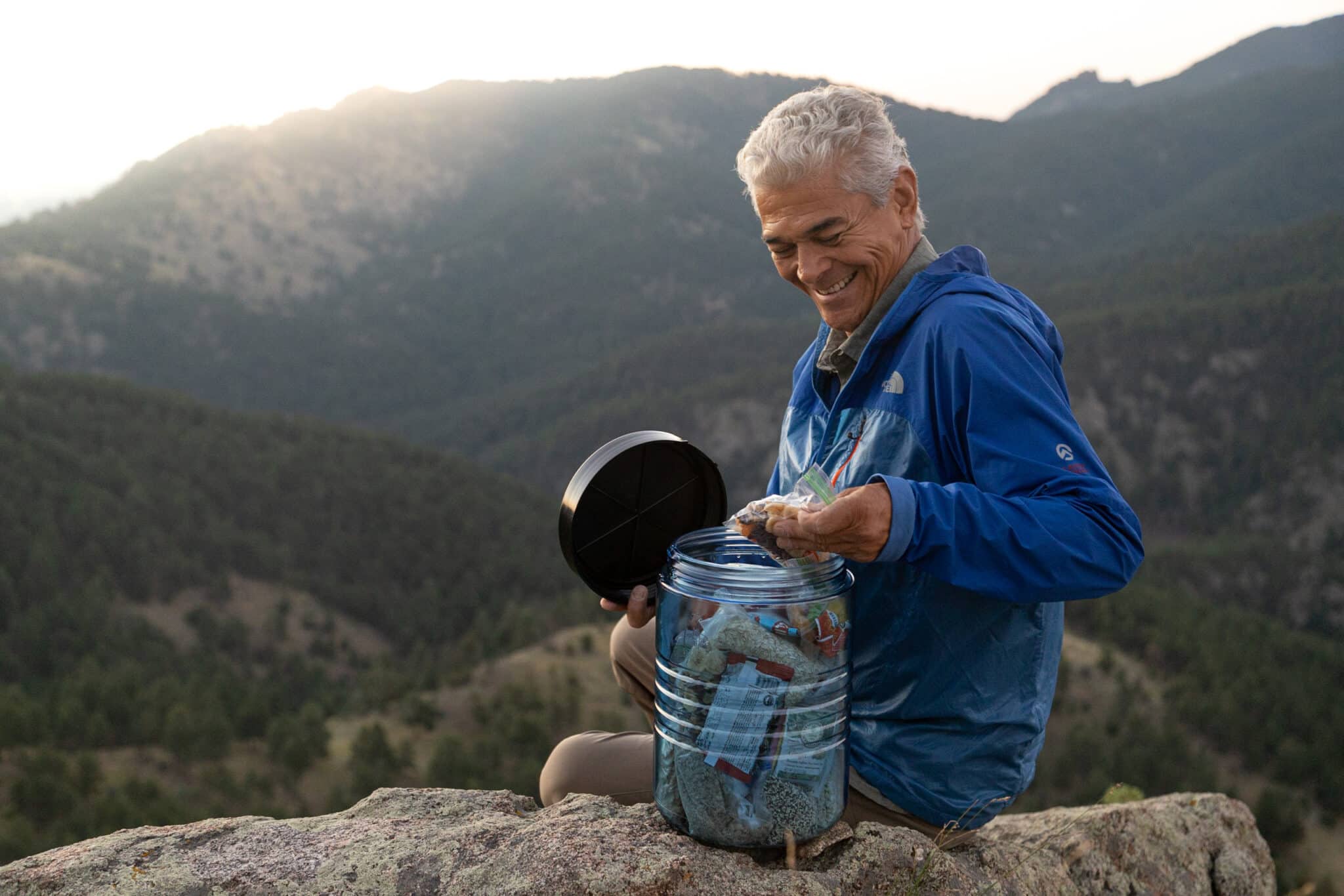
Carry protection & know how to use it.
Understand animal behavior.
Have a means of emergency communication.
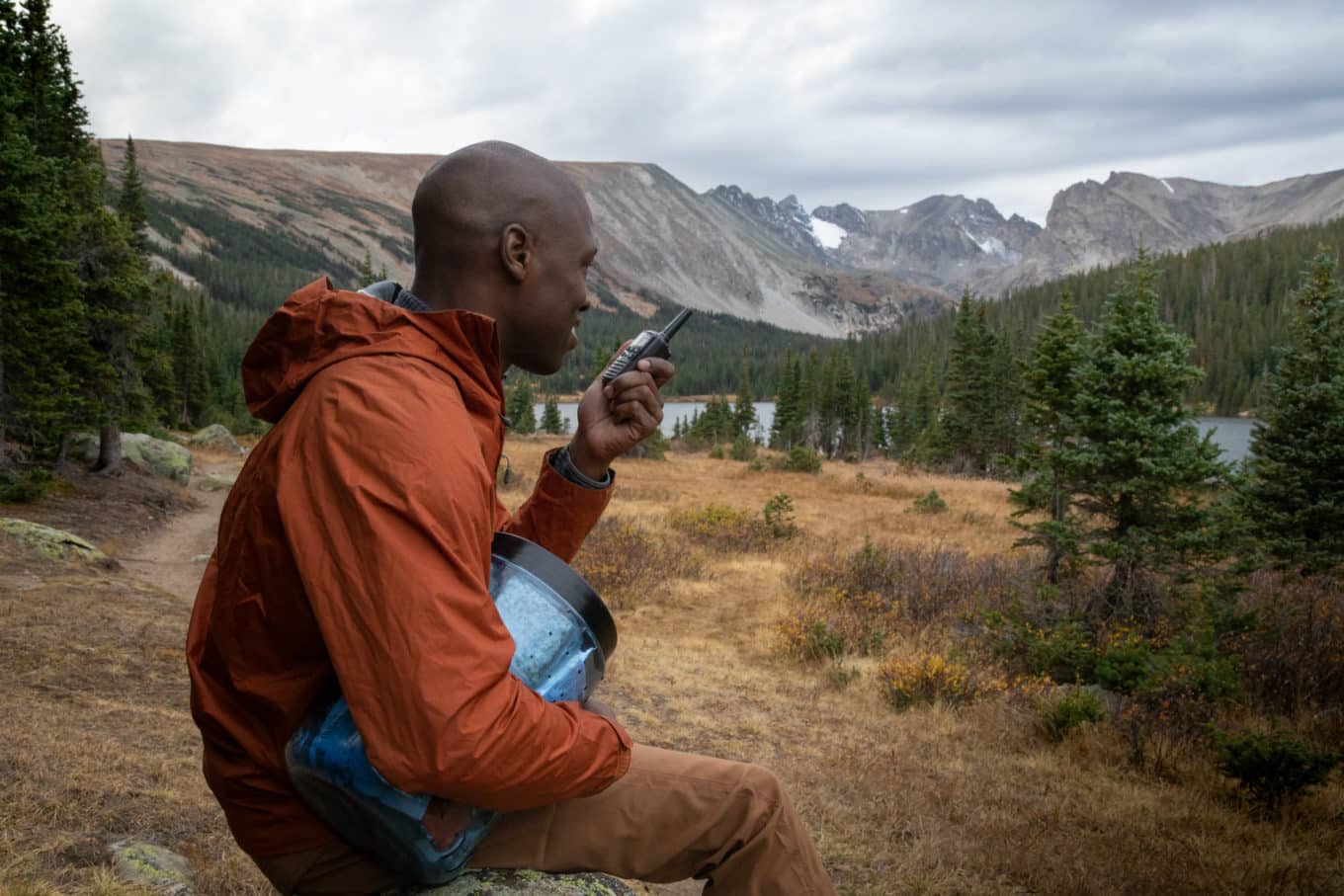
The key to success when backpacking is being well-prepared. Here’s a short step-by-step guide to make sure you tick the necessary boxes.
1. Plan your route.
Choosing a destination for backpacking can be challenging with all the mind-blowing options. Finding a field guide (whether a published guide or an in-person host) for a particular route can take the guesswork out of it for you. A good one will tell you where great campsites are and how many miles you’ll have to travel to reach them. Be sure to consider your fitness level and pay attention to elevation gain. I know I can’t log nearly as many miles when I head to the mountains and have to plan accordingly!
2. Get the necessary permits.
Permitting requirements vary by destination. Some don’t have any, some are self-issued, and still others, you literally have to win the lottery to score. Know what’s required before you travel to avoid significant disappointment upon arrival.
3. Make your menu.
When making food choices, remember that you’ll likely be burning more calories on the trail than usual. Refueling after a big miles day will take some serious grub. And, if you’re anything like me, you also need to account for simply having the munchies while you hike. Energy bars, trail mix, granola, dehydrated meals, etc., can be mix-matched to suit your tastes and caloric needs.
4. Gather your gear.
Make a list and check it twice. Or thrice. Lay everything out on the floor before you start stuffing it into your pack. Run through your day on the trail and account for everything. Sandals for river crossings? Bear canister for responsible food storage? Bug spray for evenings in a meadow? This is when knowing your route will help you decide what’s necessary and what can be left behind. I may not need a mosquito net if I’m hammocking in your state, but I wouldn’t dare go without it if my drive to the trailhead were only an hour long.
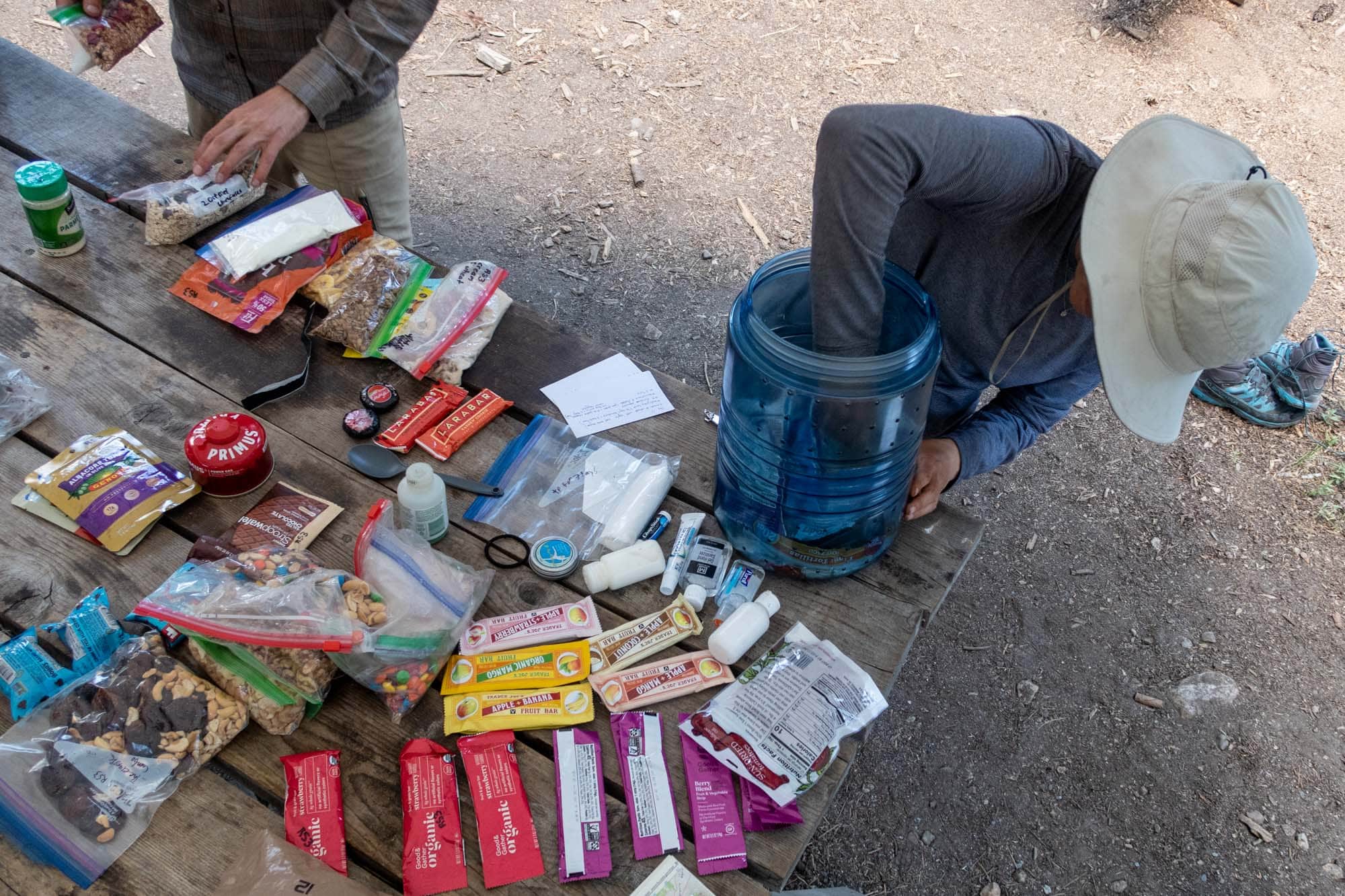
5. Stuff your pack.
When everything’s gathered, and you’re sure it’s everything, it’s time to make it fit. Knowing your pack and how to use it will take some practice, but your manufacturer will likely have content on packing efficiently. Even certain pieces of gear, like your BearVault, have videos on how to use it. If you find it challenging to fit everything in your pack, check online to see if you can find some tips specific to your set-up.
6. Communicate.
If you’re traveling alone, let a trusted friend or family member know your plans and when you’ll be back. Give them your planned route so they’ll know where to send search-and-rescue if you fail to check in at the designated time.
7. Check the weather again.
One more review of the forecast is always a good idea. Go ahead and zoom out on that radar map to see if there’s anything on the horizon. Things change. It helps to know if you’re only a day or two ahead of a developing system that could speed up unexpectedly.
When you’ve reached your first campsite, do a quick scan to ensure there aren’t signs of recent bear activity. Fresh prints, scratch marks in tree bark, or scat would all be good reasons to move along.
Pitch your tent on a durable surface, following Leave No Trace’s advice. Avoid trampling foliage when you don’t have to, especially if you’re in a location that’s home to more fragile ecosystems. Some parks, like Gates of the Arctic National Park, encourage camping on gravel bars to avoid disturbing the lichens found further inland.
Bears have incredible noses. Keeping your food away from your tent will help keep THEM away from your tent. Cook and eat at least 70 paces away, then store the rest of your stash 70 paces away in another direction to form a triangle. Doing this lets any scent-drawn predators investigate without bringing them close to you.
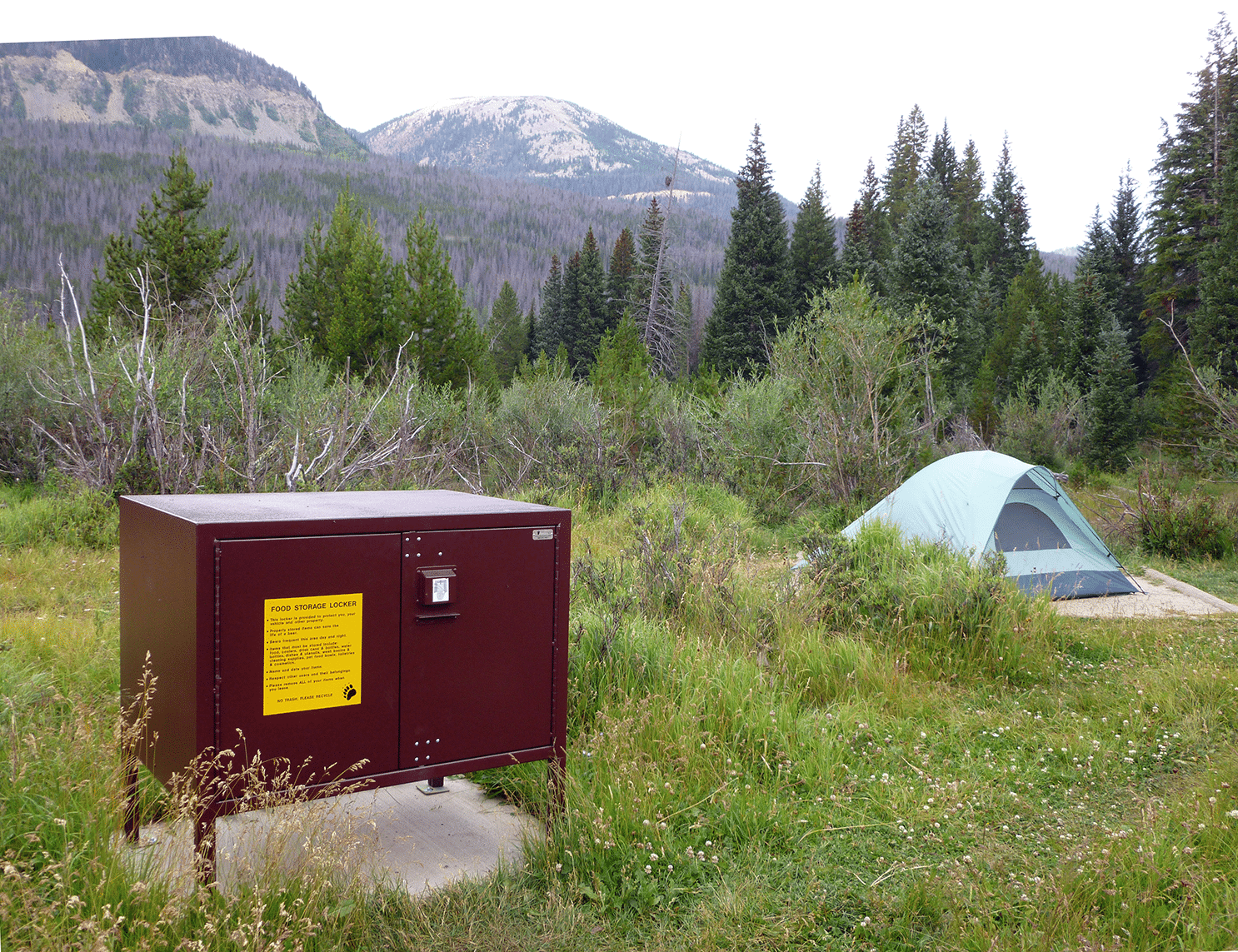
As mentioned, you need to see if you’re required to obtain a permit for your destination. You should do this during your first planning step because highly sought-after locations use the lottery system to dole out permits. Some even work 15 months in advance!
Here’s an article featuring 15 lotteries to consider. You can also bookmark the ‘Current Lotteries’ page from recreation.gov to stay abreast of what’s open to enter.
United States National Parks offer more than 85 million acres to explore, much of which is permitless. Entry to these parks is by fee, requiring the purchase of a park pass or National Parks & Federal Recreational Lands Pass. These fees go towards managing the lands and providing high-quality experiences for park visitors.
Often over-looked State Parks cover 18 million more acres and are usually less crowded during peak travel seasons. Some are free to enter. Others charge for parking to help cover the cost of upkeep and improvements.
National Forests are the big daddy of them all, though. There are roughly 188 million acres of protected lands that don’t charge an entry fee and offer free, first-come-first-serve, dispersed camping outside established campgrounds.
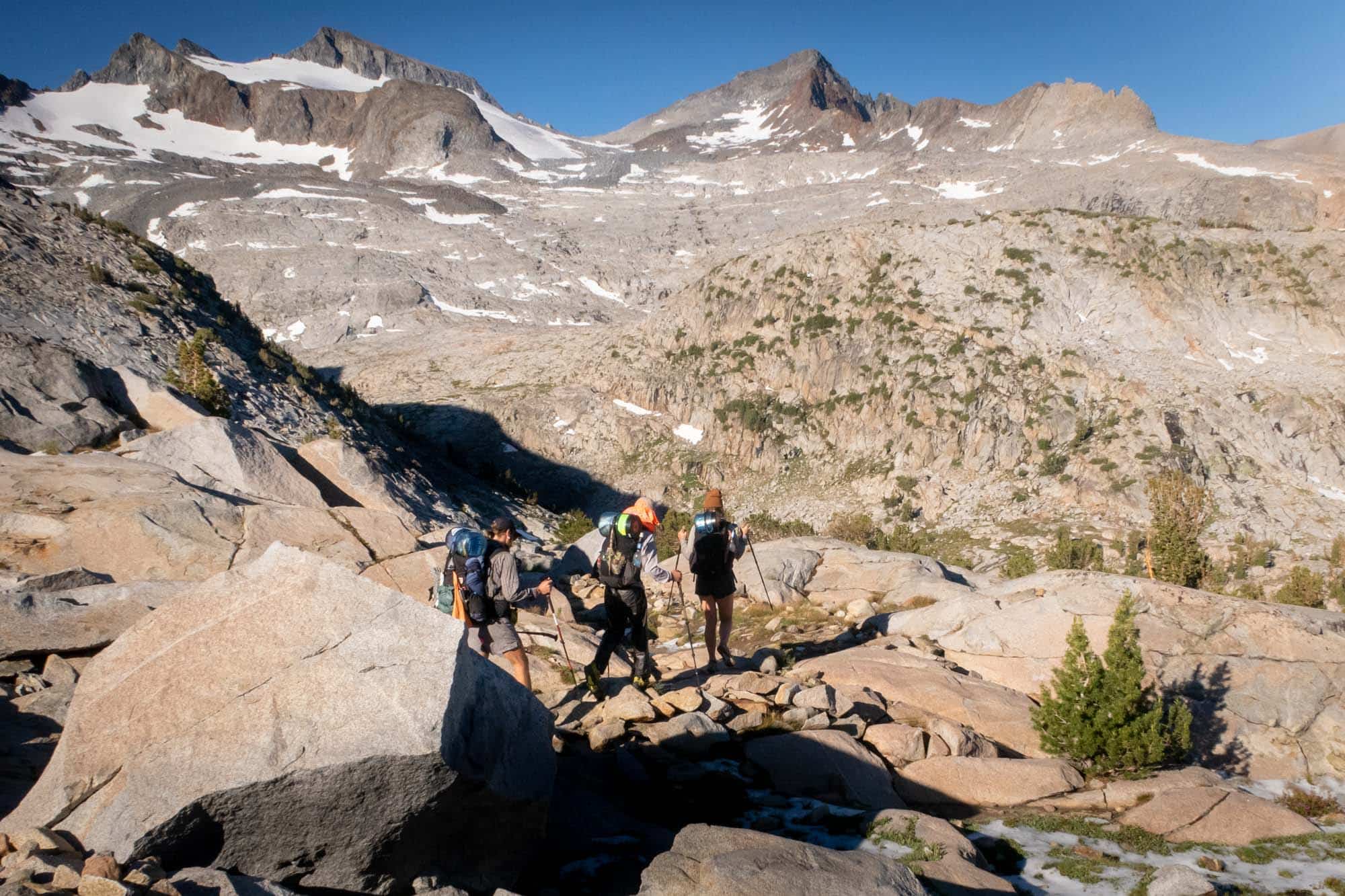
If you’re new to backpacking, it may seem like the learning curve will be too steep. There’s so much information out there and so, so many pieces of gear to collect and understand.
But don’t let those things dissuade you. My first backpacking trip was anything but stellar. I was ill-prepared and had less-than-optimal gear. Thanks to my nervous system going into hyper-drive at this new experience, I barely slept a wink, and my pack was clumsily stuffed with a terrible sleep set-up.
AND… I had an amazing time in one of the most beautiful locations ever. At the end of the day, backpacking is about getting back to nature. It’s about you, a pack, and the trail beneath your feet, coming together to ground you in the reality of your humanity and oneness with the earth.
No amount of gear or training can get you in that kind of headspace. Simply being present will suffice.

Jessica Cockroft
Jess merges her passion for words and an insatiable longing for adventure as an outdoor freelance content writer and marketer. When she’s not busy stringing words together you’ll probably find her planning another camping trip for her crew of kids or taking care of the homestead. You can find her on LinkedIn and Instagram, as well as on her own website.
